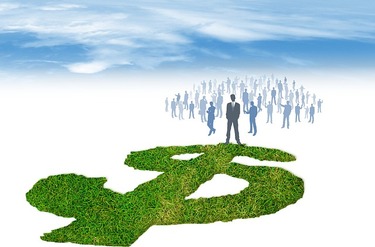
Every professional investor in the world constantly searches for investments with additional benefits without an added risk. These types of investments are hard to find since, for every growth story, the market forces may undercut that growth. Every fund in the world regardless of how incredible its track record is, there still a chance that its style will plunge or its manager will disappear or lose focus which will then result in disappointing results.
Green bonds, however, have literally grown into one of the best investment choice great for investors looking for sustainable investing. There have been many types of green projects that have been financed by green bonds according to Christopher Wigley, senior fixed income portfolio manager at Mirova located in Paris, France.
What is Green Bonds?
To put it briefly, green bonds are fixed-income securities released as either taxable or tax-exempt investments. Imagine them as a vehicle to put your money where your heart is, supporting projects that help build the environment and individual wealth at the same time.
Some of the largest types of projects include renewable energy, energy efficiency, green transportation, and water sustainability. There are projects involving biodiversity, land sustainability, waste management, sustainable forestry, and sustainable agriculture.
The assistant professor of finance at Linfield College in McMinnville, Oregon, Kyle J. Putnam, shared that for the issuer, green bonds are a great way to signal to a specific class of investors that environmental issues are of great importance to their business.
There is, however, an inevitable issue that investors, institutional, or otherwise when it comes to their willingness to accept lower returns in exchange for allocating their dollars toward investments with impactful social values. But evidence related to green bonds seems to show that the former does not have to be sacrificed for the latter.
Amy Hauter, an associate portfolio manager at Brown Advisory, based in Baltimore said its important to bear in mind that green bond is just like any other bond from an investment perspective.
Hauter also added that Brown owns them in its Brown Advisory Sustainable Bond Fund (BASBX). She said she is expecting them to produce the same yields, credit ratings, and returns as standard bonds. The benefit comes from their impact wherein they fund projects with measurable results. They are a no-brainer since it’s simply competitive returns plus additional impact according to Hauter.
The Pros and Cons of Green Bonds
Green bonds are appealing because its returns are comparable to traditional bonds with similar terms and direct impact according to Andrew Wetzel, senior vice president and portfolio manager with F.L Putnam Investment Management Company in Wellesley, Massachusetts. He also said how green bonds seem to have tremendous growth according to the estimated market growth of 67 percent in 2017 over 2016 by Bloomberg New Energy Finance.
The non-ironclad rules that define green bonds, however, could get a bend in serious ways such as when an investment in a more efficient landfill system may not be classified as “green” in any way.
There is no uniform standard that constitutes a green project according to Paul Casowitz, principal at New York City-based Sive, Paget & Riesel, an environmental law firm. He sighted China as an example where clean coal projects are classified as green projects. Any investor who wants to further specific environmental objectives needs to evaluate the projects they’re funding carefully.
The overall sustainability strategy of a company is the result of green bonds contribution based on external reviews assessments. External reviews help investors better understand how a company is utilizing green financing to change its model toward a low-carbon economy.
The Bottomline
According to experts, investors must take their time to consider their green investment a global game changer. For now, green bonds make their mark one project at a time.
Yet investors might want to pause if they consider their green investment a global game changer. For now, green bonds make their mark one project at a time, experts say.
The bottom line is, investing in green bonds still offers less risk than other alternatives. There is a bright future for green bonds and the need for capital for climate-related investments in the coming years is huge. Global agencies estimate that as much as $2 trillion to $3 trillion of capital being demanded annually to weaken the worst climate-related scenarios and the fixed income markets will need to provide a large part of that funding.
John Pournaras Agency